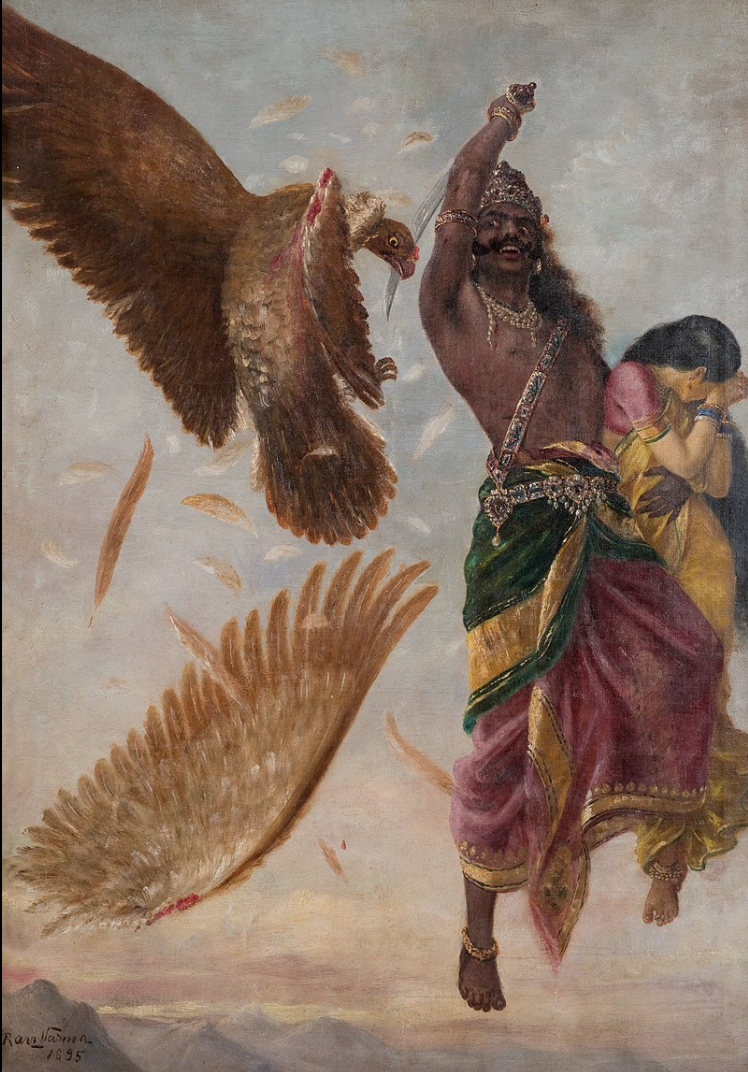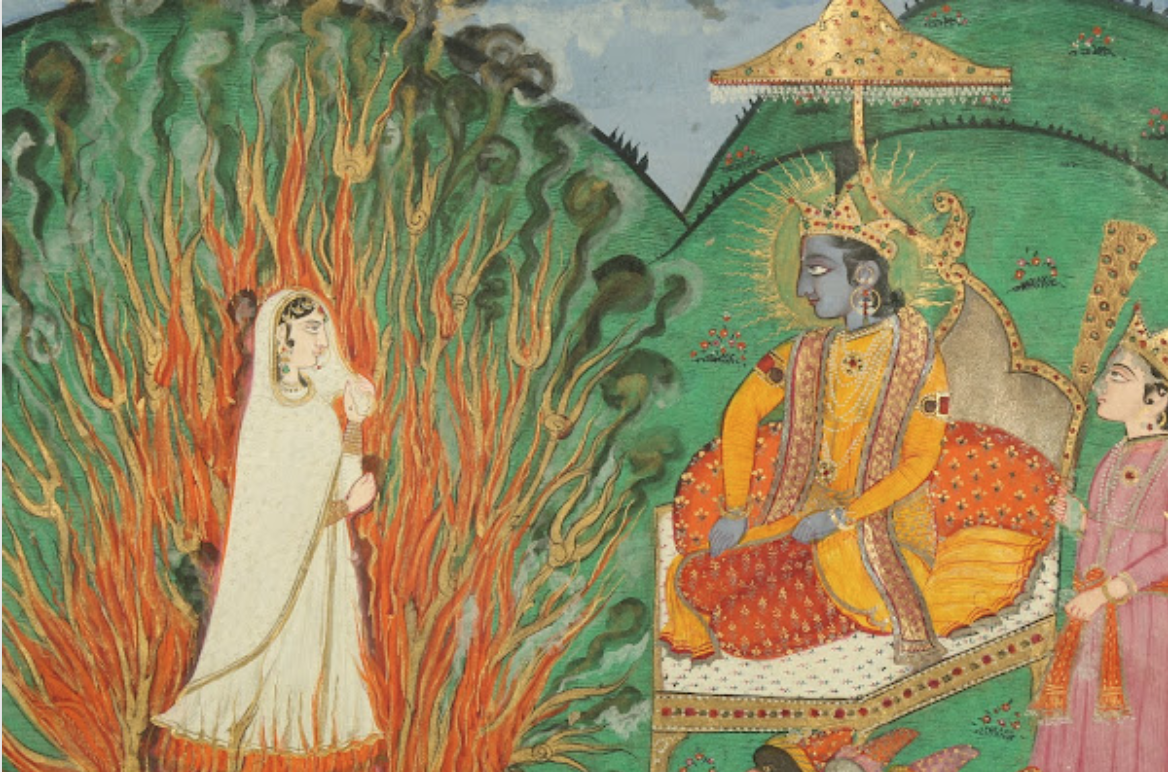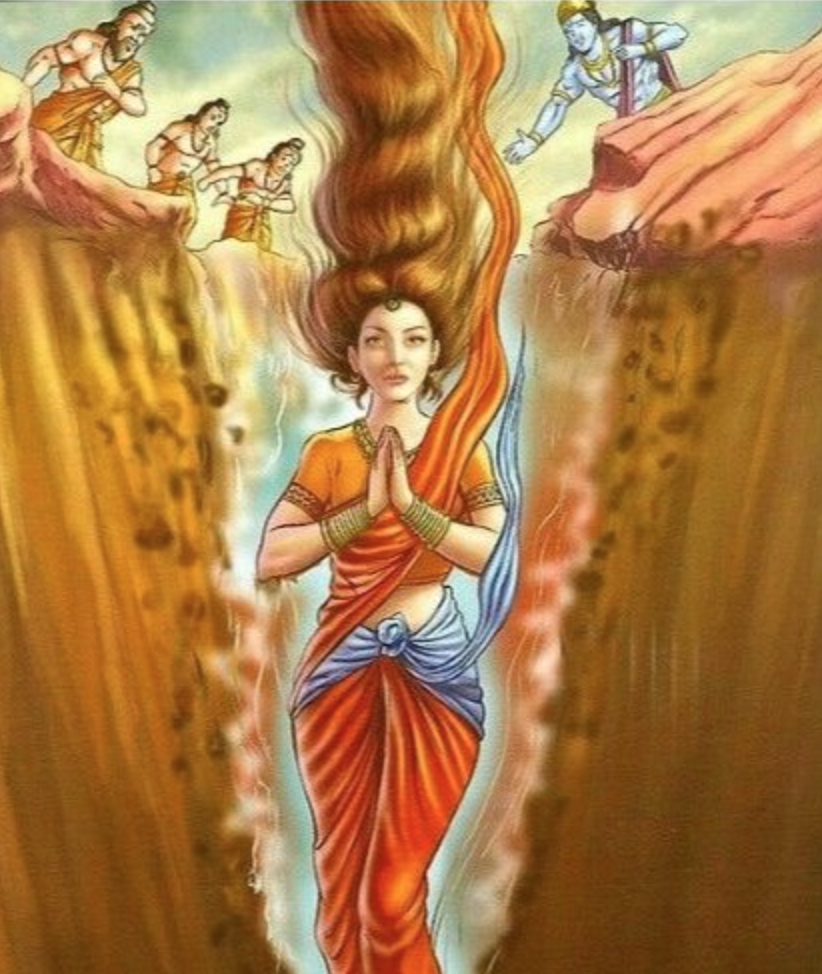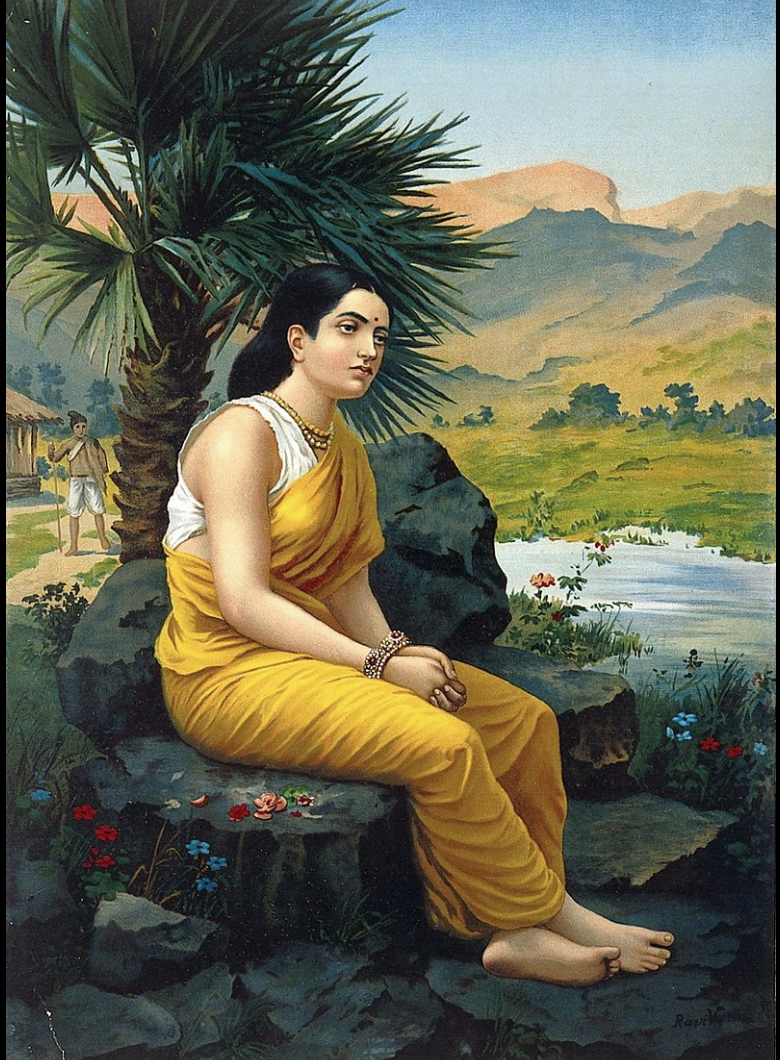Goddess Sita: Not Just A ‘Good Wife’
17 Oct 2021

Inspired by the way Lara Dwyer and I explored this story in preparation to offer our recent Sita Embodied workshop, I foreground here the way yielding to divine will can be a potent form of service.
In this telling of Sita’s story we honour the way she steadied herself through injustice, captivity and suffering. The wise way in which she knows throughout the (often tragic) unfolding of her life (exile, abandonment, being tested and forced over hot coals) that she is truly so much more powerful than any of the petty dramas and circumstances she finds herself in.
Typically, the telling of the great tale of the Ramayana portrays Goddess Sita as a subservient, passive, devoted wife. There is even backlash from young Indian women who are tired of patriarchal expectations that they should be like Sita. From a tantric viewpoint, we can look beyond this surface level telling, see beyond the patriarchal overlay, and discern from Sita’s story a deeper understanding of the divine feminine. She is, in fact, a unique expression of power in her own right.
After the telling of the story you will find some guidance on mudra, mantra, asana and questions for contemplation to deepen and embody the ways of being Sita makes available to us.
WHO ARE RAM AND SITA?
Ram is incarnated as an expression of Vishnu. He is brought into being in human form as a god-human with the capacity to slay the demon Ravana, who has been wreaking havoc throughout the cosmos. Ravana was gifted the boon of being unable to be slayed by any of the other gods (he exists in the mythical realm beyond earth, so he didn’t mention anything about being invincible to humans). Ravana has a great, terrifying army of demons roaming the universe and thus the world is in a state of adharma (imbalance).
Sita is daughter of Mother Earth, Bhumi. She is found as a baby in a furrow in the earth and is described as being as beautiful as a slice of the moon. Years later, she marries Ram in an exquisitely perfect and romantic coupling of the divine feminine and masculine, creation and consciousness, and they’re adored by the whole of their Kingdom, Ayodya (an actual place in India still now). Think of the love for royals Kate + William and Meagan + Harry combined, and add to this the fact that Ravana is still throwing the world out of balance and the whole kingdom is desperate for the triumph of good over evil. Sita and Ram are a divine couple and their love, and Sita’s presence (shakti), have brought immense beauty to the kingdom. Ram is due to become king and the entire kingdom cannot wait for this to occur, as they anticipate much prosperity will come from this time.
Through a twist of fate, on the day Ram is supposed to become king, his mother calls upon a boon she is owed from the past and dictates that his brother will instead take over the throne. She exiles Ram from the kingdom for 14 years. (This could be interpreted as the typical narrative of the ‘evil mother-in-law’ but is perhaps just the acting out of dharma by Ram’s mother, as no growth can come from comfort).
SITA'S FEARLESS TRUST
At this point, Sita has a choice: she can stay in the kingdom (the easy way out, enjoying the luxury of royal life, adored by all) or she can go with Ram, her beloved, and be in exile with him in the forest. For Sita, there really is no decision to be made. In the same way a mother allows a babe in her womb to draw all the nutrients from her body without question or choice, so Sita goes alongside Ram into the forest, giving of herself completely to him because she knows that it is her dharma.
She stays by Ram’s side, walking the forests for 13 years. The great sages of the time who live in the forest are excited about what’s unfolding. They see the potential for Ram and Sita’s union to restore harmony to the world, and they share many teachings with them to prepare them for what lies ahead. Throughout their time in the forest Ram slays, in self-defense, many of the demons in Ravana’s army.
SITA'S CAPTURE
Sita is delighted by nature. It restores her and it’s where she finds solace. Ravana hears of this Goddess and her almost-King husband wandering the forest, diminishing his army, and he decides he must put an end to it. He wants to take Sita as his own wife and destroy Ram. He concocts a plan with the reluctant assistance of cosmic magician Maricha who turns himself into a beautiful deer. Sita spots this deer as they wander the forest and pleads with Ram to capture it for her so they can keep it as their pet as they journey. Ram obliges and leaves Sita alone as he goes in pursuit of the elusive deer. Once alone, Ravana swoops in and takes Sita hostage, flying her from India to Sri Lanka and trapping her in his kingdom there.

SITA'S TRUST AND PATIENCE ARE PUT TO THE TEST
Once captured, Sita is given a second choice: she can become Ravana’s wife, live in luxury in his palace, do as she pleases and be ‘free’, OR he will cut her up and eat her. He gives her one year to decide. Day after day, Ravana’s staff of frightening demonic creatures taunt Sita in an attempt to get her to give herself over to Ravana. Day after day, Sita sits under the Ashoka trees in Ravana’s palace and remembers Ram. ‘Ashoka’ means sorrowless. Sita draws on her connection to nature and her kinship with the natural world to maintain her strength and be patient in the unfolding of what she believes will happen - Ram rescuing her.
The trees speak to her, reassuring her ‘Sister please do not fear, the seasons change, trust us, this captivity will not last forever, remember Ram and be patient”. She remembers Ram and she feels the trees broadcasting her devotion through their branches and leaves.
The year almost comes to a close and Sita’s faith has never wavered. She continues to remember Ram and calls to him. We are reminded at this point in the story that when we remember the divine, the divine remembers us. Creation is listening. The creator is listening. Just in time, Ram arrives to rescue her.
SITA'S PURITY IS DOUBTED
I would love to say that they all lived happily ever after, but unfortunately it’s not that simple. Even though Ram is god-like, incredibly wise, and has many spiritual gifts, he is still ultimately human and therefore flawed. Ram’s ‘thing’ (we all have ours), is his fear of what others will think of him, and his need to uphold a certain facade of perfection and nobility. After rescuing Sita, he worries that she may not have been faithful to him and may have slept with Ravana. He insists she prove herself by walking through fire.
Sita is unfazed by this. At no point in the story is she angry, resentful or worried. Her trust is so complete and her heart is so pure that she happily offers herself up to the test. A huge fire is conjured and Sita, adorned in a garland of fresh flowers, steps into the flames. The fire rages until Sita eventually, walking over the hot coals, emerges completely untouched. Even the dew remains on the flowers of her garland. Ram accepts this symbol of her purity and they return to Ayodya, their time in exile is over.

SITA IS OUTCAST
Again, it would be lovely to say that they all lived happily ever after, but unfortunately it’s still not that simple. Sita soon finds out she is pregnant with twins and as rumours of the pregnancy begin to circulate, so do rumours that it could be Ravana, not Ram, who is the father of her children.
Upon hearing of this, Ram exiles Sita from the kingdom once again. Losing the respect of his people is after all, his Achilles heel. So despite their love and the children she bears, he exiles her back into the forest. Such an abandonment would justify anger, resentment, rage and sorrow. But Sita remains unfazed. Every step of her journey she knows she is more powerful than whatever petty drama and tests are placed on her path. Like nature herself, she yields to them, encompasses them, the way a river bed widens as the tide rises.
Sita births twin boys and raises them in the forest. With nothing but love and respect for Ram, trusting that he too is fulfilling his dharma, she patiently and tenderly cares for her children and raises them to be fine young princes.
SITA RETURNS TO MOTHER
On hearing of these princely twins in the forest, aged 13, Ram finds them and invites Sita back into the kingdom. He simply asks that she prove her purity once again through another fire ceremony. Not outraged or offended, Sita in that moment simply knows that she has done enough. She has fulfilled her duties, she has held all she can hold and been faithful for as long as she was required. With a sweet smile, Sita calls to Mother Earth to receive her. A huge crack opens in the earth and Sita is swallowed back into the source from which she came.


Questions for contemplation/journaling
What are the challenges and tests you face in your life?
Where could you demonstrate more of Sita’s wise, trusting nature?
If you were Sita, is there a point at which you would have stopped trusting in divine will? In your own life, is there a point at which you will lose faith?
Mudra practice
Sitting cross legged, or in a comfortable seat, place the peace fingers of your right hand down into the ground beside you (Bhumi/ Earth mudra). Imagine an umbilical cord from your fingertips into the earth: a connection between you and source that has never been broken. A source from which you can be nourished and supported. Breathe freely in relationship with this source.
Mantra practice
Om Namo Narayani | Let us bow down the the divine mother
This mantra resonates in the heart space and promotes humility and willingness to yield to the divine.
You can repeat the mantra throughout the day (mantra japa) or you may like to listen to this version by Edo & Jo.
Asana practice
Vrksasana | Tree pose
Adopting the sorrowless, reassuring posture of the Ashoka trees, broadcasting devotion through your leaves.
Sukhasana | Easy cross-legged seat
Waiting patiently, resting back into the trunk of the Ashoka tree.
Utkatasana | Chair pose
Building heat, stepping into the fire, feeling the intensity without letting it to rise to anger or frustration.
Tadasana | Mountain pose
Find steadiness in standing, two feet on the ground. Try closing your eyes down and walking backwards, with complete trust, from the front of your mat to the back. Take a big sweeping breath in when you arrive and lift your arms up over head, then dissolve forwards into uttanasana (forward fold).
Artwork credits
Ravana kidnapping Sita, painting by Raja Ravi Varma.
Sita's Fire Ordeal, an illustration from a Ramayana series.
Sita in Exile, a lithograph based on Raja Ravi Varma's work.